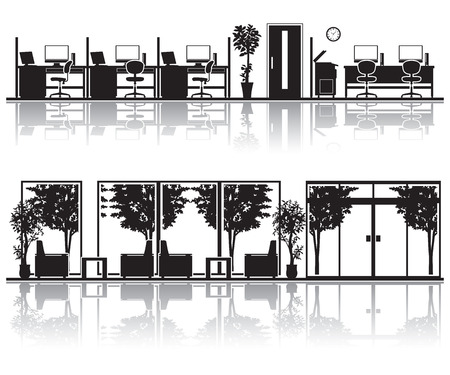Introduction to Mid-Century Modern Design
Mid-Century Modern design stands as an enduring hallmark of American creativity and innovation, emerging in the post-World War II era when optimism and a desire for progress shaped homes across the nation. Rooted in the late 1940s through the mid-1960s, this iconic style is characterized by clean lines, organic forms, and a harmonious connection between indoor and outdoor spaces. Influenced by both European modernism and uniquely American sensibilities, Mid-Century Modern design emphasizes functionality without sacrificing beauty, celebrating materials like wood, glass, and metal in their natural state. The core principles—simplicity, minimal ornamentation, and seamless integration with nature—continue to inspire today’s interiors, making Mid-Century Modern more than just a retro trend. Its timeless appeal endures because it effortlessly blends comfort with sophistication, creating spaces that feel both nostalgic and refreshingly contemporary for American homes.
2. Charles and Ray Eames: Innovators of Functional Beauty
When you think of mid-century modern design, the name Eames immediately comes to mind. Charles and Ray Eames were a husband-and-wife duo whose creative partnership transformed American furniture design in the 1940s and 1950s. Their approach blended innovative technology with a playful sense of style, making their work both accessible and highly functional for everyday living.
Inventive Techniques Meet Everyday Comfort
The Eameses pioneered the use of molded plywood and fiberglass, which allowed for organic shapes that embraced the human body. This not only brought ergonomic comfort into the home but also introduced an entirely new aesthetic—sleek, minimal, and distinctly modern. Their designs, like the iconic Eames Lounge Chair and Ottoman, became instant classics that are still coveted by collectors and interior designers alike.
Signature Pieces That Shaped Modern Living
| Design | Year Introduced | Key Features |
|---|---|---|
| Eames Lounge Chair & Ottoman | 1956 | Plywood shell, leather upholstery, luxurious comfort |
| Eames Molded Plastic Chair | 1950 | Colorful, stackable, affordable, versatile for home or office |
| Eames Wire Chair | 1951 | Sculptural wire seat, light yet sturdy construction |
| Eames Storage Unit (ESU) | 1950 | Modular shelving, customizable, colorful panels |
A Playful Yet Practical Legacy
The Eameses believed that “design is for living,” infusing every piece with both joy and practicality. Their playful color palettes and inviting forms reflected postwar optimism in America while addressing real needs in family homes, offices, and public spaces. Today, their furniture continues to be manufactured using sustainable practices—a testament to their forward-thinking ethos. The Eames legacy lives on not just in museums but in countless American households, blending beauty with functionality in a way that remains as relevant now as it was over half a century ago.

3. Eero Saarinen: Sculpting Iconic Spaces
Few names resonate in American mid-century modern design quite like Eero Saarinen. Born to a family of architects and artists, Saarinen brought his unique vision to both architecture and furniture, leaving an indelible mark on the American landscape. His approach embraced organic shapes, innovative materials, and a commitment to functional beauty—qualities that made his work instantly recognizable and enduringly popular.
The Tulip Chair: Revolutionizing Modern Seating
Saarinen’s most iconic furniture piece is undoubtedly the Tulip chair. Designed for Knoll in 1956, this sleek, pedestal-based chair was part of his mission to “clear up the slum of legs” found beneath tables and chairs. With its sculptural silhouette and single central support, the Tulip chair became a symbol of futuristic elegance. Its minimalist form and use of fiberglass reinforced plastic set new standards for both aesthetics and technology in home furnishings—features still sought after by today’s eco-conscious homeowners who appreciate timeless design and durable materials.
Architectural Landmarks that Defined an Era
Saarinen’s visionary influence extended far beyond the realm of furniture. In architecture, he crafted some of America’s most celebrated landmarks. The Gateway Arch in St. Louis stands as a soaring tribute to westward expansion—and to Saarinen’s genius for blending bold form with symbolic meaning. Meanwhile, the TWA Flight Center at JFK International Airport broke new ground with its sweeping curves and open, flowing spaces, capturing the optimism of postwar travel. These buildings not only shaped skylines but also inspired generations of architects to balance innovation with environmental integration.
Lasting Impact on American Design
Eero Saarinens legacy thrives in homes, offices, and public spaces across the country. His ability to merge comfort with cutting-edge style helped define mid-century modernism as both practical and aspirational. Today, designers draw from his example—prioritizing sustainability, flexible living spaces, and organic forms—to create environments that feel both inviting and forward-thinking.
4. Florence Knoll: Shaping Modern Workspaces
Florence Knoll stands out as one of the most influential figures in mid-century modern design, especially when it comes to reimagining office environments. Her approach went far beyond aesthetics—she believed that a well-designed workspace could shape the way people work and collaborate, laying the groundwork for today’s open and eco-conscious offices.
Transforming Office Design
Before Florence Knoll, office layouts were often rigid and uninspiring. Knoll introduced the concept of the “total design,” where architecture, furniture, and interior elements worked together harmoniously. She championed modular furniture systems that allowed for flexible spaces, making offices more adaptable and functional. Her vision paved the way for collaborative work cultures, favoring shared tables over isolated cubicles.
Championing Collaboration and Sustainability
Knoll’s designs encouraged teamwork by breaking down physical barriers between employees. She understood that an open environment not only boosted productivity but also fostered creativity. Moreover, her attention to sustainable materials was ahead of her time—choosing quality, durable resources that minimized waste and embodied the emerging values of environmental responsibility.
Key Contributions of Florence Knoll
| Contribution | Description | Lasting Impact |
|---|---|---|
| Total Design Philosophy | Integrated architecture, furniture, textiles, and art for cohesive spaces. | Modern offices still use this holistic approach for seamless environments. |
| Modular Furniture Systems | Created flexible pieces like the famous Knoll sofas and credenzas. | Inspired today’s adaptable office furnishings. |
| Open-Plan Workspaces | Pioneered layouts that encouraged collaboration over isolation. | Became the standard for creative companies and startups. |
| Sustainable Material Choices | Selected long-lasting, responsibly sourced materials. | Influenced eco-friendly trends in contemporary workplace design. |
A Lasting Legacy in American Culture
Florence Knoll’s influence is unmistakable in countless American workplaces—from tech headquarters in Silicon Valley to creative studios in New York City. Her focus on collaboration, comfort, and sustainability continues to inspire designers who seek to create healthy, connected work communities. In many ways, she didn’t just design furniture or spaces; she designed a new way of working and living together.
5. George Nelson: Visionary of Modern Living
Among the luminaries of Mid-Century Modern design, George Nelson stands out as a true visionary who reshaped the way Americans experienced home life. Working as Design Director at Herman Miller, Nelson introduced a fresh perspective on functionality and aesthetics, forever altering the American domestic landscape.
Innovative Storage Solutions
Nelson’s passion for efficiency and order resulted in pioneering storage solutions that merged form and function. His iconic Storage Wall, introduced in 1945, revolutionized interior architecture by integrating storage directly into the structure of the home. This modular wall unit not only maximized space but also reflected the needs of a rapidly evolving postwar society seeking both flexibility and elegance in their living environments.
The Art of Time: Nelson Clocks
Nelson’s playful approach to everyday objects is perhaps best seen in his celebrated clock designs. The Ball Clock, Sunburst Clock, and other whimsical timepieces went beyond simple utility—they became sculptural centerpieces for the modern American home. These clocks, with their bold shapes and vibrant colors, remain quintessential icons of Mid-Century style, infusing joy and creativity into daily routines.
Modular Furniture for Flexible Living
As American lifestyles shifted toward informality and adaptability, Nelson responded with innovative modular furniture systems like the Comprehensive Storage System (CSS). Designed to be customizable and easy to rearrange, these pieces empowered homeowners to curate their spaces according to changing needs—whether entertaining guests or carving out a cozy reading nook. Nelson’s vision anticipated today’s emphasis on sustainable living by promoting durability and versatility over disposability.
A Lasting Legacy
George Nelson’s forward-thinking designs continue to resonate in American homes and offices. His commitment to practicality without sacrificing beauty set new standards for accessible luxury and eco-conscious design—reminding us that great design can bring harmony to our lives while treading lightly on the earth.
6. The Lasting Legacy of Mid-Century Modern Designers
Mid-century modern designers have left an indelible mark on American style, shaping the way we live and think about our homes today. Their approach to blending beauty, comfort, and function continues to resonate, especially as sustainable design gains momentum across the country. By prioritizing natural materials, efficient construction, and timeless forms, visionaries like Charles and Ray Eames, Eero Saarinen, and Florence Knoll set a precedent that aligns closely with today’s eco-conscious values.
What makes their work so enduring is not just the iconic silhouettes or innovative use of materials—it’s their commitment to creating pieces that last. In an era when fast furniture dominates, mid-century modern designs stand out for their quality craftsmanship and ability to be refurbished or passed down for generations. This longevity speaks directly to sustainability: owning fewer but better things reduces waste and supports a healthier environment.
The influence of these designers can be seen in everything from energy-efficient open floor plans to the popularity of recycled wood and minimalist decor in American homes. Their belief in simplicity, light-filled spaces, and honest materials encourages us to rethink how we furnish our lives—choosing pieces that are both beautiful and responsible. As a result, mid-century modern creations remain beloved not only for their aesthetic appeal but also for how they continue to inspire mindful living and greener choices in American households today.


